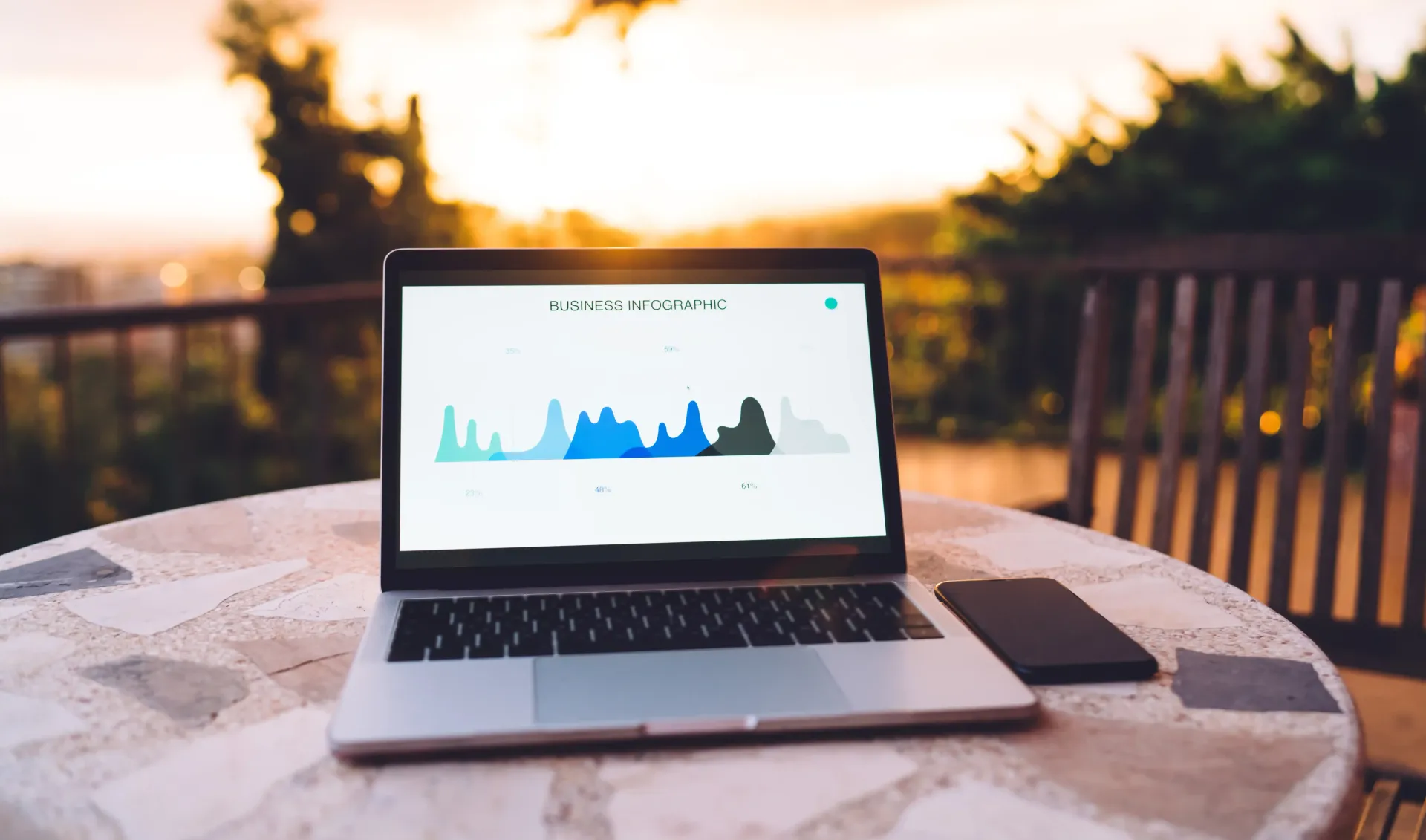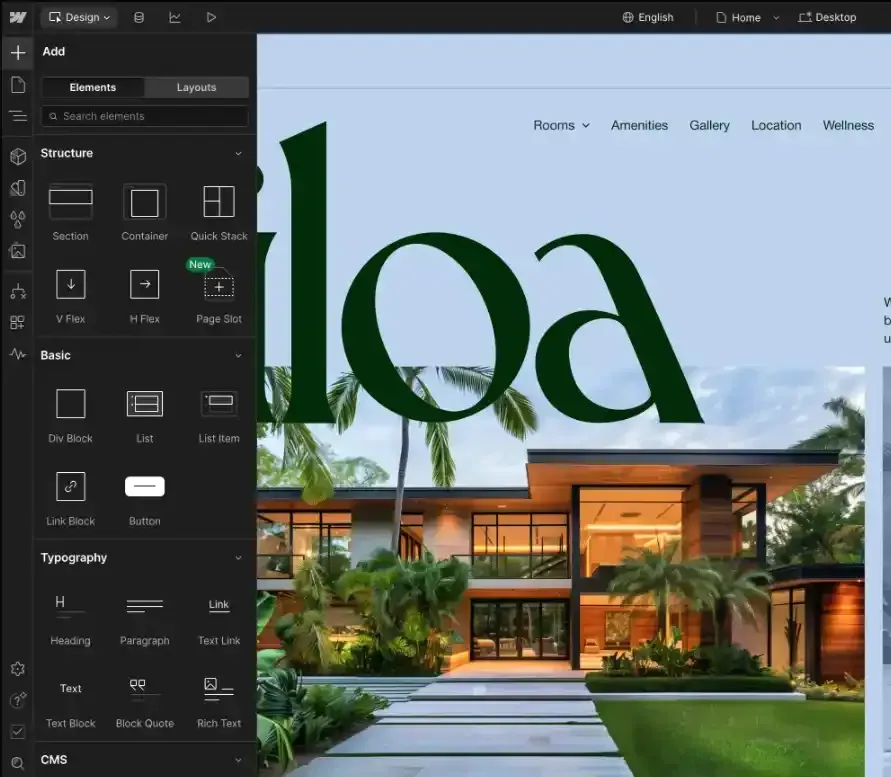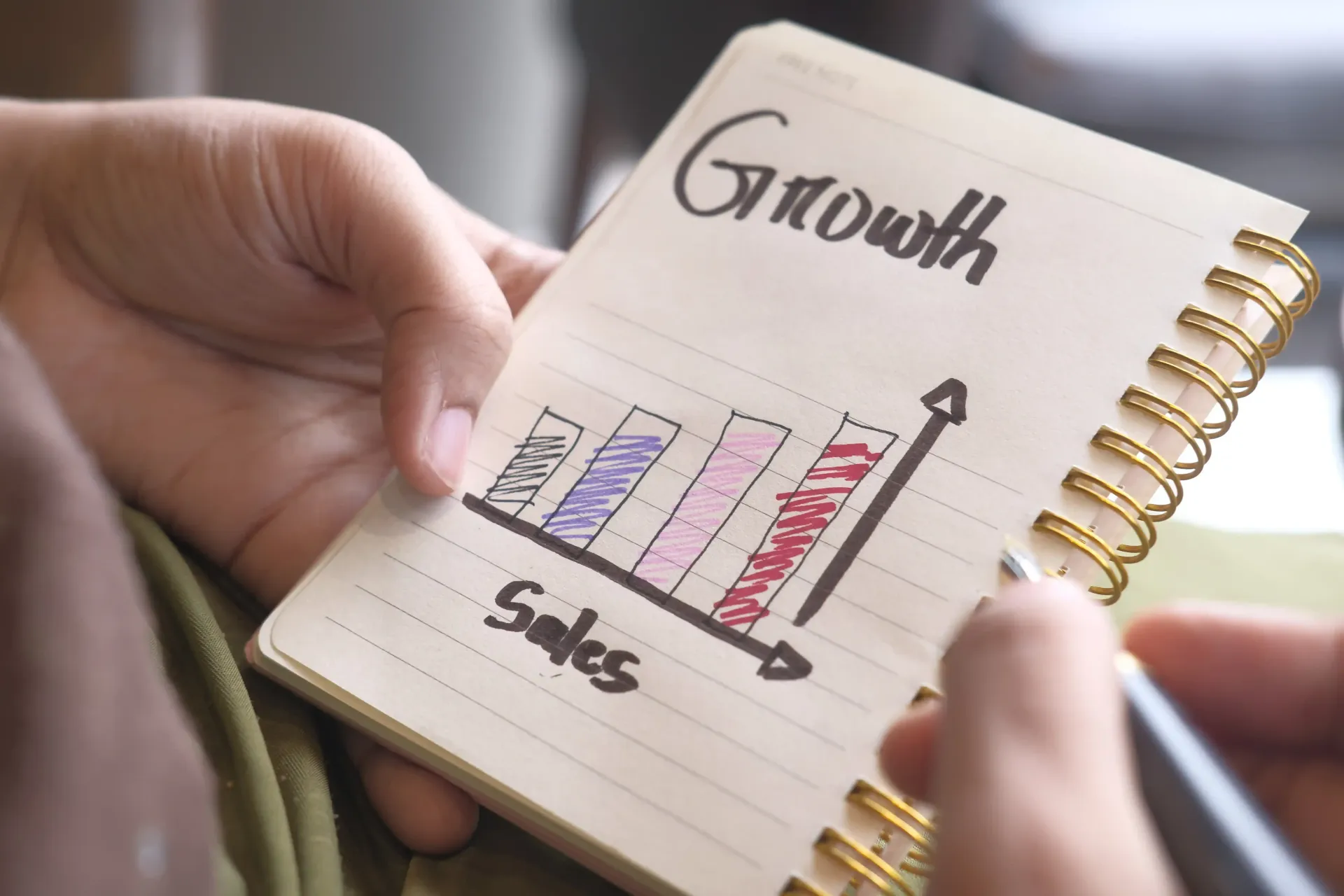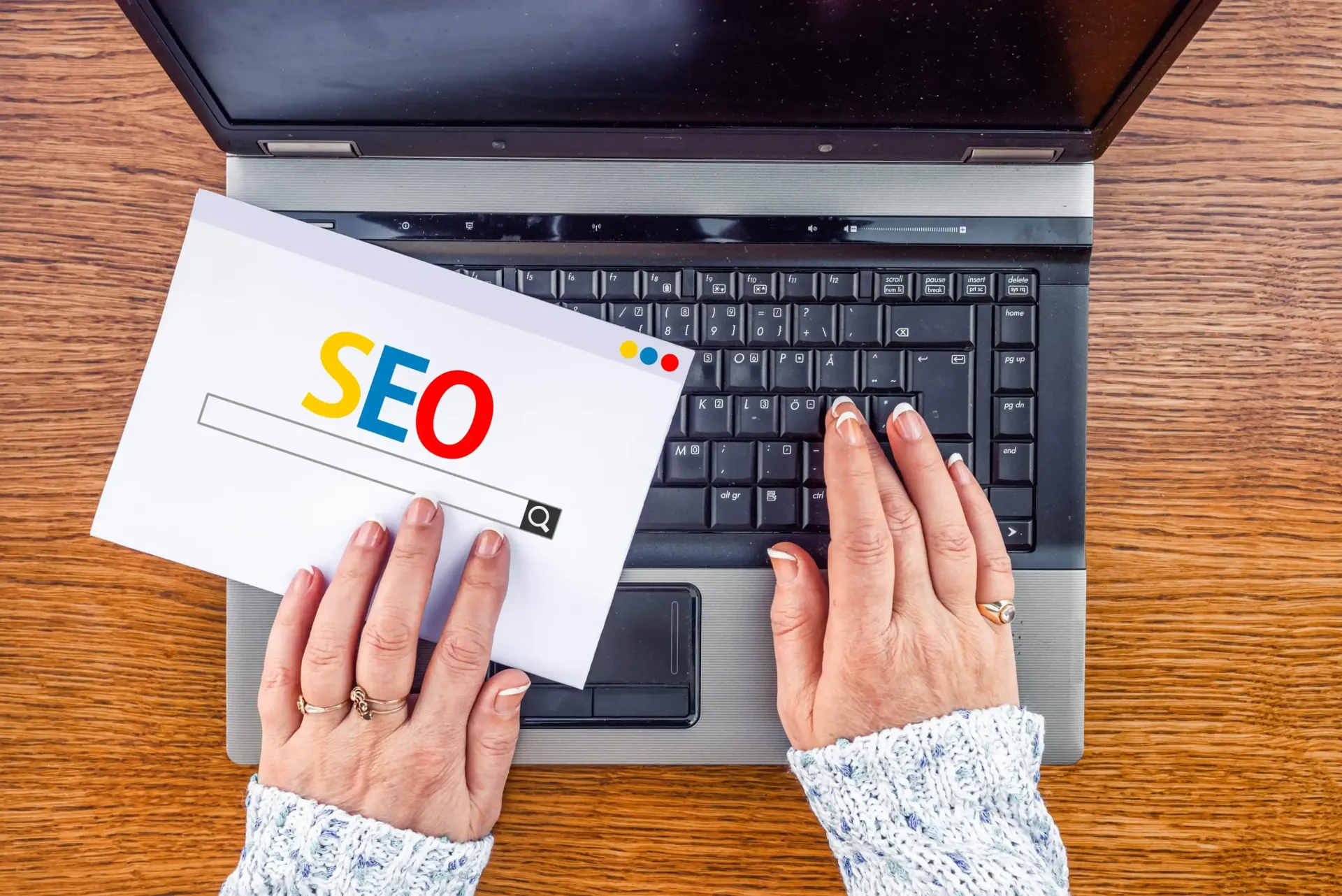How to Create a Funnel Website That Converts Leads: A Step-by-Step Guide

TL;DR:
- If your business depends on social media, you're building on borrowed ground. A funnel website gives you control.
- This guide walks you through designing a lead-generating website with clear goals, SEO-driven blog content, and calls-to-action that convert.
- Learn to create a homepage, services page, and blog that move visitors through your funnel, powered by lead magnets, email opt-ins, and automation.
- With the right structure and SEO strategy, your site works while you rest, turning traffic into trust and clicks into clients.
Introduction
When I was running my fitness coaching business, everything depended on social media.
My marketing efforts were: posting daily, following trends, and answering DMs, until burnout forced me to stop. And when I did, my business collapsed.
I wasn't generating leads, making sales, and I had no backup plan.
The problem wasn’t my offer, it was my foundation.
I didn’t have a website, a funnel, an email list, or any evergreen content.
I had borrowed attention, and when I stopped posting, it disappeared.
That experience changed everything.
I went all in on learning SEO, funnel strategy, and email marketing.
I started building funnel websites for real, local businesses. This included landscaping, HVAC, concrete, and car transport to name a few. I saw how those systems could sustainably generate qualified leads.
Now I help content creators build websites that do the work for them, guiding website visitors, building trust, and converting leads 24/7.
In this post, I’ll walk you through how I create a funnel website that works even when you’re not online.
Understanding the Customer Journey
Before you design your funnel website or write any content, you need to understand how people become your customers. This process is called the customer journey. It includes every step someone takes from first discovering your brand to becoming a loyal buyer.
Think of it like this:
- Awareness Stage – They find out you exist. Maybe they see a blog post, a Google search result, or hear about you from a someone they know.
- Interest Stage – They want to learn more. They might visit your site, read a few pages, or follow you on social media.
- Consideration Stage – They start comparing options. They’re deciding whether your offer is the right fit for them.
- Decision Stage – They’re ready to take action. Book a call, join your list, or make a purchase.
- Post-Purchase Stage – After they buy, they either become repeat customers… or disappear. This stage is where loyalty is built.
I recommend that you map out this journey so you can create the right content at each step. This way, visitors always know where to go next.

Build Your Website With the End in Mind
Before writing a headline or choosing a layout, ask yourself the most important question:
What’s the #1 action I want visitors to take?
If you’re unclear on the goal, your visitors will be too.
Most websites are designed like galleries. Nice to look at, but with no direction. A funnel website should be more like a map, with one clear destination and simple paths to get there. You want to avoid drop off points where site visitors get lost or confused and leave.
Your Website Should Guide, Not Just Inform
Every page on your site should move visitors closer to your goal.
Ask:
- On your homepage, what’s the next step?
- On your blog, where do they go after reading?
- On your About page, what should they do next?
Don’t overload with options. Focus on one consistent next step throughout your site.
Remember, your website is a key part of your sales process.

Define Your Funnel Goal
Start by choosing one clear action you want from visitors:
- Download a lead magnet → Best for growing your email list
- Book a discovery call → Ideal for service-based businesses
- Join a waitlist → Great for launches or cohort programs
- Buy a digital product → Works well for low-ticket offers
- Read a key blog post → A smart first step into your funnel
Once you’ve picked your goal, you can design your entire site around it.

Reverse-Engineer the User Journey
Start from the goal and work backwards:
- What page do they land on?
- What headline keeps them reading?
- What trust-builder moves them forward?
- What CTA gets the click?
Each element should move them toward your goal, not distract them.
Funnel websites keep things focused for your visitor and your business.
Tip: Give Each Page One Job
Trying to do too much on one page confuses people.
Instead:
- Let your homepage drive the primary funnel (like a freebie or call)
- Use your blog to educate and guide with internal links
- Let your services or sales page close the deal once someone is warmed up
When you build your site with the end in mind, you stop leaving conversions to chance—and start guiding your target audience with intention.
Design a High-Converting Homepage (Without Confusing People)
Your homepage is the opening of your lead gen funnel.
But here’s the key: don’t try to say everything.
A great homepage is focused on one outcome and moving your target audience toward it with clarity.
Lead With a Benefit-Driven Headline
The headline is your hook. You have about 3 seconds to make potential customers feel like they’re in the right place.
It should quickly answer:
- Who do you help?
- What do you help them do?
- Why should they care right now?
Avoid vague or clever language. Get straight to the point.
Example:
❌ “Helping You Grow Online”
✅ “Build a Scalable Coaching Business Without Posting Every Day”
If a total stranger lands on your site, your headline should make them say, “That’s me.”


Use a Subheadline to Clarify and Connect
The most successful lead generation funnels have a subheadline on their homepage that confirms potential customers are in the right place while explaining how you help.
Think of this as your elevator pitch in one or two tight sentences.
Your subheadline should:
- Reinforce who your offer is for
- Highlight the approach or method you use
- Hint at the outcome or transformation you deliver
Examples:
- “For content creators ready to grow on autopilot using SEO, evergreen funnels, and email campaigns.”
- “Helping overworked content creators turn their website into a lead machine so they can stop relying on social media.”
This section builds trust. It lets your target audience know you understand their pain, and you have a process that works.
Pro tip: Use plain language. Avoid jargon unless your audience speaks it too.
Focus on One Strong Call-to-Action (CTA)
Your homepage should lead to one clear action—no more, no less.
Whether it's:
- Downloading a lead magnet
- Booking a discovery call
- Joining a waitlist
Choose the action that opens your funnel and stick with it across the page.
CTA Button Tips:
- Use action-oriented language:
- “Download the SEO Starter Checklist”
- “Book Your Free Strategy Call”
- Place your CTA button in multiple spots (header, mid-scroll, footer)
- Make sure it’s easy to tap on mobile devices and stands out visually
A focused homepage reduces decision fatigue and increases conversions.
It’s not about showing everything you do. It’s about showing the one thing your potential customers should do next.
Write Pages That Guide People Toward a Decision
Your website should do more than look good. It should be a sales lead funnel that guides visitors step by step toward working with you.
That guidance comes from clear, strategic page structure that maximizes lead engagement. Every page should answer questions, build trust, and invite the next action.
Here are the three core page types your funnel site needs:


About Page With Purpose
Your About page isn’t about listing credentials—it’s about helping potential customers see themselves in your story.
Keep it focused on connection and relevance:
- Start with the “Before”: Share the challenge you faced that mirrors theirs.
- Explain the Shift: What changed? Introduce your core approach or values.
- Highlight the “Now”: Show how you help people today—and who you serve best.
- Add CTAs: Include opt-in prompts midway through and at the end.
💡 Tip: If you want to keep things simple, you can include a condensed version of your About section right on your homepage.
Services or Work With Me Page
Visitors here are already interested. This is where you guide them toward action.
Structure this like a mini sales funnel:
- Problem: Call out what they’re struggling with.
- Process: Share how you solve it (keep it clear and skimmable).
- Proof: Add testimonials or screenshots to build trust.
- Investment: Explain what’s included. Optional: include pricing or a call link.
- Strong CTA: “Book Your Strategy Call” or “Apply Now” works well here.
Repeat your CTA at least twice so it’s easy to act with no scrolling or searching required.
And yes, if you want a streamlined site, this section can also live on your homepage.
Blog: The Engine Behind Your Funnel
Your blog is where content marketing meets conversion. It draws in search traffic, builds trust, and helps potential clients move closer to becoming paying customers, without needing to get on a call first.
Make your blog a funnel tool by:
- Writing content that answers questions your audience is actively searching for
- Embedding opt-ins and freebies within each post
- Linking to other relevant blog posts, service pages, or your freebie
- Sharing personal insights or case studies that make your expertise relatable
- Using tools like scroll-triggered popups or exit-intent forms to grow your list
You don’t need to write new post every week. Just ensure your blogs are high-value and evergreen while solving real problems to guide prospective customers through your lead gen funnel.
When each page has a clear job and works together to guide the visitor, you turn passive clicks into intentional actions. That’s how a website becomes a conversion funnel and a key part of your sales process.
Choosing the Right Website and Funnel Builder Tools
To build a funnel website that converts, you’ll need tools that are easy to use, flexible, and built to support your conversion goals.
You can use a website builder, a funnel builder, or a combination of both.

Website Builders (Simple and Flexible)
Website builders give you control over design, branding, and SEO. This makes them ideal for content creators who want a custom site.
Duda
- Drag-and-drop builder that’s fast, responsive, and easy to update
- Built-in SEO, blogging, form integration, and white-labeling features
- Great for agencies, small business owners, and content creators
Squarespace
- Sleek templates ideal for creatives
- Includes built-in blogging and email tools
- Less flexible for advanced customizations
WordPress (with Elementor or Divi)
- Highly customizable and scalable
- Extensive plugin ecosystem for SEO, pop-ups, opt-ins, and more
- Best for users comfortable managing some backend setup
Webflow
- Visual editor with advanced design capabilities
- Ideal for startups or designers wanting more control
- Clean code and CMS options for scaling content

Funnel Builders (Built for Conversions)
Funnel builders are designed to help you create sales funnels with built-in steps: landing pages, opt-ins, automations, and payments.
ClickFunnels
- Complete sales funnel builder for landing pages, upsells, and checkouts
- Great for digital products, coaches, and high-ticket offers
Leadpages
- Easy-to-use landing page platform with templates and A/B testing
- Ideal for freebies, webinars, and growing email lists
Kartra
- All-in-one platform (landing pages, email, CRM, payments, memberships)
- Best for businesses selling multiple offers from one place
Systeme.io
- Budget-friendly option with landing pages, email marketing, and course hosting
- Great for getting started with funnels without investing in multiple tools
Do You Need a Funnel Builder?
Not necessarily. If you’re building a content-first site with clear CTAs and email integrations, a website builder like Duda or WordPress is often enough.
Use a funnel builder if you:
- Want to launch multiple offers quickly
- Need built-in checkout and upsell features
- Prefer a guided, all-in-one experience
Start with the tool that fits your current workflow. What matters most isn’t the software. Rather, it’s building a site that guides visitors step-by-step from awareness to action.
Create a Funnel with a Lead Magnet That Opens the Funnel
If your website is the front door, your free magnet is the invitation to come inside. It’s your most important tool for turning curious visitors into paying customers, especially those who aren’t ready to buy yet.
Most people don’t convert on their first visit. They browse, hesitate, and leave, unless you give them a clear reason to stay connected via your freebie and your sales lead funnel.
What a Lead Magnet Really Is
A lead magnet, or free resource (freebie), is a preview of the transformation you help people achieve.
Done well, it solves one real problem your audience has right now, builds trust, and moves them closer to your paid offer.
Your goal: make that first “yes” easy.

What Makes a Lead Magnet Convert
A high-converting free resource should be:
- Specific – Directly tied to your service or offer.
Example: “5-Step SEO Website Audit” for an SEO strategist. - Quick to Consume – Designed for a busy audience.
Think: 5–15 minutes max for a quick, useful win. - Actionable – Helps them make progress right away.
Example outcomes: identify a blind spot, clarify next steps, or take a small action.

High-Converting Formats
Choose a format that delivers value fast:
- One-page checklist
- Mini workbook or guide
- 3-day email course
- Swipe file or template
- Short tutorial video
- Quiz or self-assessment
- Script or pitch example
Don’t overthink design. Clarity and usefulness matter more than fancy fonts.
Where to Place Your Lead Magnet
A great lead magnet needs visibility. Add opt-ins in key places:
- Homepage CTA – Front and center, above the fold.
- Blog posts – Scroll-in pop-ups or embedded sections mid-article.
- About page – Add a banner when reader connection is highest.
- Services page – Offer it as a “not ready yet?” next step.
- 404 page – Redirect lost visitors to something helpful.
- Footer – A quiet but consistent opportunity.
- Email signature – Include it in every email you send.
The more places your free magnet appears, the more chances you have to capture qualified leads and guide them into your sales funnel.
Optimize Your Website to Turn it Into a Conversion Funnel
Design can catch attention, but strategy keeps people moving. A funnel website isn't just a pretty homepage; it's a system built to convert.
That means intentional layout, smart content, and clear next steps throughout.
Add CTAs Wherever It Makes Sense
Don’t wait for the homepage to do all the work. Add clear calls-to-action across your entire website:
- About Page – Midway and at the end, guide visitors toward your lead magnet or service.
- Blog Posts – Use in-line prompts, banners, or pop-ups.
→ “Want a full step-by-step guide? Download it here.” - Service Page – Place a CTA after each section (Problem → Process → Proof).
- Footer – Add a short line and button to download your freebie.
- 404 Page – Offer a redirect:
→ “This page is gone—but this free guide can help you grow without social media.” - Thank-You Pages – Recommend a related blog post or bonus freebie.
- Email Signature – A subtle CTA in every email is free visibility.
Every page is an entry point. Make sure each one nudges the visitor toward becoming a paying customer.

Use SEO to Drive Organic Traffic
SEO makes your funnel sustainable. Instead of relying on social media or paid ads, SEO brings in people already searching for what you do.
Start with keyword research. Use tools like:
- Google Autocomplete – See what real people are typing in.
- Ubersuggest or Answer the Public – Discover questions your audience is asking.
- Keywords Everywhere – A browser add-on that shows search volume and competition.
- Google Keyword Planner – One of the more detailed tools to research the performance of keywords by viewing key metrics
Choose keywords that reflect the intent behind the search. If someone searches “how to build a sales funnel website,” they’re likely trying to solve a problem you can help with—start there.

Then create blog posts that:
- Use your keyword in the title, meta description, and intro paragraph
- Break blog content into helpful, scannable sections using H2s and H3s
- Embed your lead magnet naturally, right when someone’s thinking “I could use this”
- Add internal links to related content and your Services page
- End each post with a clear, aligned CTA
→ “Need help building your funnel website? Grab my free starter checklist.”
SEO brings qualified visitors. Your content builds trust. Your CTAs capture leads.
If done right, SEO becomes your best traffic source, and it keeps feeding your sales process long after you hit publish.
Connect to Your Email Marketing Platform
Your lead generation funnel doesn’t work unless your opt-ins lead somewhere. That “somewhere” is your email list, and it needs to be connected and automated.
Each form on your site should:
- Collect only what’s necessary (usually just name + email)
- Trigger an immediate delivery email for your freebie
- Add each subscriber to a tagged list or automation sequence
Use tools like:
- ConvertKit – Great for visual workflows and tagging
- MailerLite – Budget-friendly with solid features
- Flodesk – Beautiful, beginner-friendly designs
- Systeme.io – Ideal if you want everything (website, funnel, email) in one tool
When your site, content, and email platform work together, you don’t just collect clicks. You build relationships and drive results.
Final Thoughts: Start Building a Funnel Website That Works While You Rest
My fitness coaching business didn’t fail because I lacked skill or passion. It failed because I built it on borrowed attention.
When I stopped posting, the leads stopped too.
I didn’t have an optimized website.
I didn't have a buying process.
I didn’t have a funnel.
I didn’t have email campaigns or evergreen content working in the background.
That’s why I’m so passionate about helping other creators build real infrastructure. The kind that works without you having to be “on” 24/7.
A funnel website doesn’t just look nice. It drives action.
It guides visitors from first touch to paying client, step by step.
And when paired with strong SEO and email marketing, it keeps generating leads, even when you’re offline.
If you’ve been relying on social media alone, or if you’re just ready for something more sustainable, it’s time to build a system that supports your business long term.
We'll help you map out your lead magnet funnel. Then we'll show you how we optimize your website and turn your online presence into a lead-converting machine, without the burnout.











